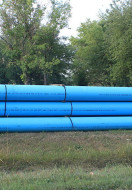You can't see it, touch it, smell it or feel it, so it must not be there, wrong. The recent tragedy that took place in an affluent suburb of NY, is one we are all too familiar with. A physician and father came home from a night shift at County Medical Center to find everyone inside dead, his daughter, her babysitter, his parents and their friends --- six unsuspecting victims, of the silent killer, Carbon Monoxide.
Carbon Monoxide TestingIt was unusual to have five consecutive days in early May with temperatures nearing 90 degrees F. To make everyone comfortable, the father turned on the central air conditioner… without turning off the furnace. In addition, the air conditioner was set to a lower temperature than the furnace. As the air conditioner cooled the house, the furnace heated it simultaneously. Furthermore, the furnace and air conditioner were located in a room no larger than a utility closet, and the fresh air vent to the outside was closed. The combination of the above created a negative pressure condition within the house and caused the deadly carbon monoxide fumes to back-draft into the utility closet. The carbon monoxide detector emitted its warnings. Thr Carbon Monoxide Detector had been deactivated… He thought the CO detector was malfunctioning or too sensitive.
What he didn't realize is that Carbon monoxide is slowly poisoning everyone inside. CO is a colorless, odorless, tasteless toxic gas.
You can't see it, touch it, smell it or feel it, so it must not be there, WRONG. Many people with CO poisoning mistake their symptoms for the flu and are misdiagnosed by physicians. When CO is inhaled, it quickly absorbs into the bloodstream, attaching itself to red blood cells. This is called Carboxyhemoglobin. Carboxyhemoglobin reduces the amount of oxygen the body needs to function properly. The father made the fatal mistake of disabling the detector. The air-conditioner disperses the toxic carbon monoxide throughout the house killing everyone in it. Investigators said the deaths were the result of a confluence of mistakes and inattention to the heating and air conditioning systems.
This recent tragedy is not particular to this incidence; it unsuspectingly kills over 200 people and sends some 5,000 more to the emergency room each year. In 1998 gas crept similarly through an air conditioning system of a Syosset man, and in 1999 an elderly couple died when they left their car running in the garage, in 1994 tennis pro Vitas Gerulaitis died from a faulty pool heater that was adjacent to a window of a guesthouse of a Southampton home.
What should you do to prevent CO poisoning? Anyone living in a house primarily heated by oil, gas, propane, wood, and coal or with an attached garage must be aware of the potential for CO poisoning. Heat; cooking appliances, cars, anything, which burns fuel, may produce carbon monoxide. Over time and use, heating systems of all types may cease to function properly. Therefore, these systems must have a carbon monoxide detector installed. Install a CO detector that meets the requirements of the Underwriters Labs (UL) stamp of approval. Install a CO detector in the hallway near every separate sleeping area of the home. Make sure furniture or draperies cannot cover the CO detector. Make sure appliances are installed according to manufacturer's instructions. Have the heating system, cooking appliances, woodstoves, pellet stoves, fireplaces, etc. (including chimneys and vents) inspected and serviced annually. Never burn charcoal inside a home, garage, vehicle, or tent. Never use portable fuel-burning camping equipment inside a home, garage, vehicle, or tent. Never leave a car running in an attached garage, even with the door open. Garage interior entry should be self-closing to reduce the chance or carbon monoxide infiltration into the living space. Seal any holes in the firewall. Never service fuel-burning appliances without proper knowledge, skills, and tools. Always refer to qualified professionals when performing minor adjustments or servicing. Never use fuel-burning appliances such as ranges, ovens, or clothes dryers for heating your home. Never operate unvented fuel-burning appliances in any room of a home. Remember when buying a CO detector; try to find a constant read detector, which shows the CO levels with up to the minute data. It should also have a Reset/Hush switch so that the alarm indicating high CO concentrations can be silenced for retesting. Never ignore an alarming CO detector/alarm.
If the alarm sounds: operate the reset button, and call emergency services (fire dept., 911 or utility company). Leave the house until they arrive to prevent further exposure.
ASHRAE, American Society Of Heating, Refrigeration and Air Conditioning Engineers - states that indoor ventilation air shall meet air standard (9ppm). EPA, Environmental Protection Agency - recommends 9ppm or lower as an ambient air quality goal averaged over eight hours, and 35ppm or lower as an ambient air quality goal averaged over one hour. The term ppm means for one particle of carbon monoxide there are one million particles of oxygen. CO is measured in ppm because it is so deadly in the smallest amounts. There are no safe levels of CO exposure acceptable in a home. Therefore, 0 ppm is the desirable level for a home. If someone is exposed to as small as 50 ppm, (fifty parts per million… that's less than 1/100 of 1% Carbon Monoxide to Oxygen) for a period of 8 hours, they may experience headaches and confusion, 800 ppm, (eight hundred parts per million…that's less than 1/10 of 1% CO to O), can immediately show signs of nausea and convulsions, and within 2 hours can cause death, and 12,800 ppm, (twelve thousand eight hundred parts per million…that's only 1% CO to O), will cause death within 1 to 3 minutes.
As part of a home inspection, many inspectors may test for carbon monoxide, and make you aware of its dangers. The inspector may sample air qualities throughout the house and near those areas particular to CO producing equipment.
Submitted by: Robert Albani







